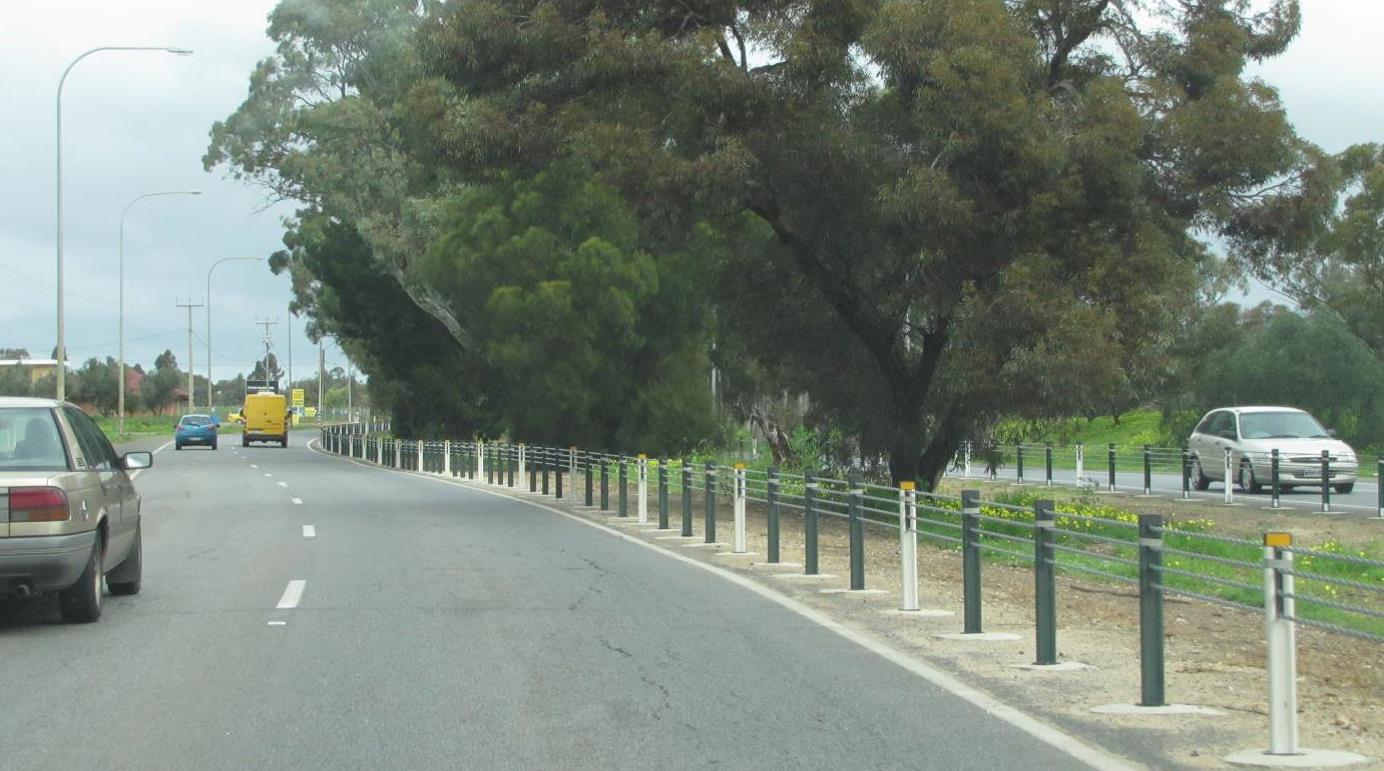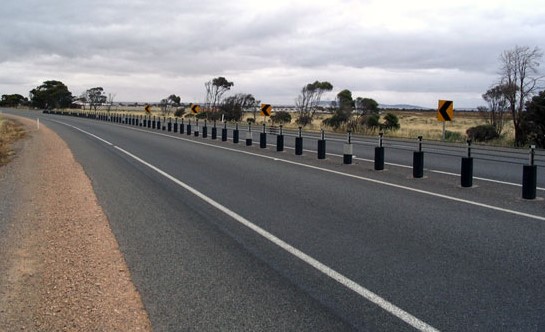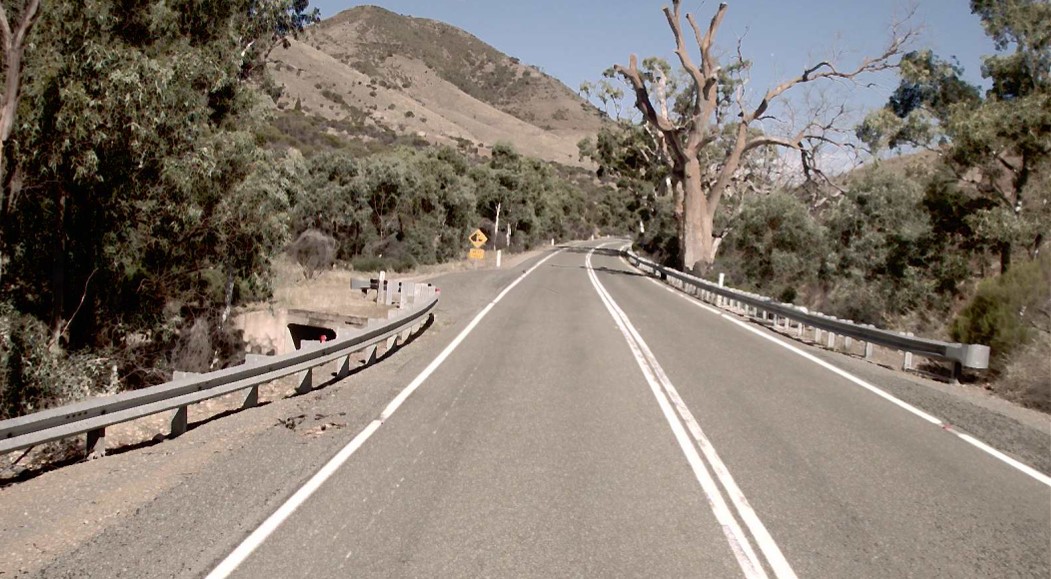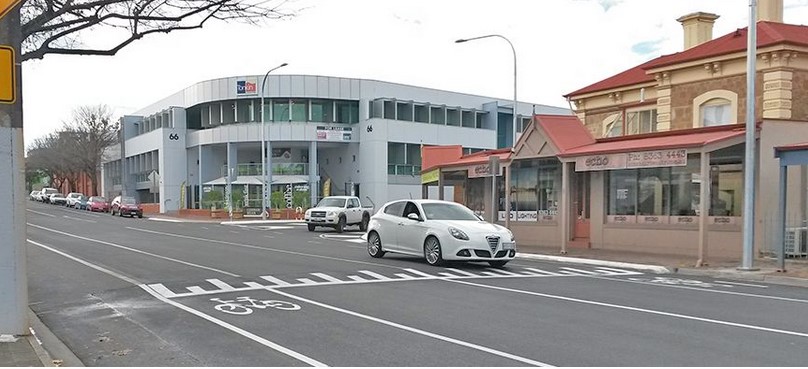Building safer roads
Road design and treatments play a significant role in minimising the severity of injury in the event of a crash. Safe road design prevents unintended use and encourages safe behaviour by users.
Adelaide Metropolitan roads
Urban driving generally involves higher volumes of traffic, numerous intersections and increased road use by pedestrians and cyclists compared to rural areas.
The majority (80%) of minor injuries occur in the Metropolitan Adelaide area. In contrast 43% of all fatalities and 59% of serious injuries occur on Metropolitan Adelaide roads. Almost half of all serious casualty crashes occur at intersections and most likely to occur on a 60 km/h road.
The most common type of serious casualty crash in the metropolitan area is when a vehicle collides with a fixed object, most common objects being struck were trees and poles.
Just under half of all serious injury crashes in metropolitan Adelaide occur at intersections. Around one third of these crashes occur at signalised intersections and the remainder at intersections either with no control, Stop signs, Give Way signs and at roundabouts.
Read our fact sheet for more information on Metropolitan Adelaide road crashes (PDF, 400 KB).
Rural road crashes
Higher speeds travelled on rural roads result in more severe crash outcomes. Historically, there are more fatalities recorded in rural South Australia than metropolitan Adelaide, whilst almost half of serious injury crashes occur in rural areas.
The most common casualty crash types on high speed rural roads is when a driver loses control of the vehicle and leaves the road, hitting a fixed object, or rolls over.
Read our fact sheet for more information on Rural road crashes in South Australia (PDF, 341 KB).
Key strategies and actions
The key strategies for creating safer roads are outlined in Towards Zero Together, South Australia's Road Safety Strategy 2020 and subsequent Action Plans.
The Government of South Australia is addressing a range of priority infrastructure programs to improve road safety.
Black Spot Program
Black Spot Programs directly target improvements to the safety of roads with proven crash history or high-risk locations and are a vital part of the State's commitment to improving road safety and reducing road crashes and trauma on South Australian roads.
Improving safety at intersections
A difficult task undertaken by drivers is to judge gaps in the opposing traffic when turning right. Effective treatments, such as full or partially controlling right turns at signalised intersection will reduce the frequency at which drivers need to make these individual judgements. Signalised intersections with a history of right turn casualty crashes are progressively upgraded to reduce the likelihood of crashes from occurring. Upgrades may involve right turn traffic arrows and extending right turn lanes. Signalised intersections where infrastructure treatments have been added to improve safety in recent years include:
- Findon Road and Trimmer Parade
- North East Road and Grand Junction Road
- West Lakes Boulevard with Frederick Road and Tapleys Hill Road
- Montague Road and Reservoir Road
- Trimmer Parade and Frederick Road
- Woodville Road and Torrens Road
- Marion Road and Mooringe Avenue
- Grange Road and Frederick Road
- Grand Junction Road and Valley Road
- Panalatinga Road and Pimpala Road; and
- North East Road and Sudholz Road
Shoulder Sealing
Shoulder sealing is aimed at improving the safety of regional roads by sealing the road shoulder to provide a seal width that allows greater opportunity to recover safely if the vehicle moves from the travelling lane.
A common cause of crashes on country roads is running off the bitumen on to the soft edge then over-correcting steering to the right or braking too hard. Shoulder sealing on rural arterial roads has the potential to reduce crashes by more than 40% by providing additional safety margins when vehicles run off the road because of driver fatigue or errors in judgement.
Factors to determine priorities for roads for shoulder sealing include casualty crash rates, the road function, the density of roadside hazards such as trees or drop offs and the volume of vehicles on the road including the percentage of heavy vehicles.
Recently completed shoulder sealing projects include:
- Copper Coast Highway, between Paskeville and Kadina.
- Farrell Flat Road, Clare and Farrell Flat.
- Riddoch Highway, between Willalooka and Padthaway and between Keppoch and Naracoorte.
- RM Williams Way, between Clare and Spalding.
- Tod Highway, on curves between Lock and Tooligie.
- Shoulder sealing works scheduled to be undertaken in 2017 include:
- Pages Flat Road, between Willunga and Myponga
- Port Broughton to Kadina Road, between Port Broughton and Alford
- Eden Valley Road, between Angaston and Birdwood
- Balaklava to Mallala Road between Hoskin Corner and Owen Road, Pinery Road

An example of shoulder sealing in rural South Australia
Hazard Protection
Hitting a fixed object, rollover and head on crashes are the dominant crash types in rural South Australia. Roadside barriers are used to reduce the severity of each of these crash types.
Wire Rope Safety Barriers (WRSB) were installed on Main North Road, Smithfield Plains, in 2014. The barrier is designed to absorb crash energy with the aim of reducing crash severity compared with a crash involving hitting a tree in the central median.
Another example of WRSB was the installation of 2.3km in the central median on Victor Harbor Road, Willunga Hill, in 2013 and earlier in 2010 on Port Wakefield Road, just south of Port Wakefield. The wire rope barriers in this instance were installed to reduce the likelihood of head on crashes.

Wire rope safety barrier in the median on Main North Road

Wire rope safety barrier in the median on Port Wakefield Road

An example of guard rail in rural South Australia
Guard rail, or w-beam, is more often installed on windy roads where roadside hazards are near the edge of the road. Similarly to WRSB, guard rail is designed to reduce crash consequences by absorbing crash energy. Motorcyclist safety has also been improved through the use of motorcycle protection on roads in the Adelaide Hills with high motorcycle crash rates.
Intersection Improvements
Improving safety at rural intersections is an important aspect of improving road safety. Roundabouts in particular are a very effective treatment to reduce the crash likelihood and severity at rural intersections. Roundabouts have recently been constructed or are under construction at the following locations:
There are many other rural intersection upgrades, such as channelized right turn lanes at the intersections of Williamstown Road/Springton Road and Tea Tree Gully – Mannum Road and Chain of Ponds- Cudlee Creek Road and more innovative treatments such as vehicle activated signs installed at the intersection of Riverview Road, Pfeiffer Road and Woodside - Nairne Road.
Raised platforms
A unique raised platform at the junction of Rundle Street and The Parade West in Kent Town was completed in early 2015, and is the first of its kind on an arterial road in South Australia. The platform requires motorists to slow down as they enter this junction and works in a similar way to a speed hump, with the key difference being that the entire junction is raised.
The project included the installation of signs alerting motorists to the platform, upgrades to lighting at the junction and improvements to the local drainage system.

Raised intersection platform at Kent Town
Powerlines (PLEC) program
Wherever possible, the department works with SA Power Networks to underground power on major projects such as Adelaide’s North-South Corridor and via the PLEC Program to remove a roadside hazard.
Light poles on arterial roads are designed to either slip off at the base or crumple when struck to reduce the impact forces experienced by the vehicle occupants.
Latest news

National Road Safety Week 2022
15 May 2022National Road Safety Week is being held across Australia from 15 - 22 May 2022.

Travellers through Port Wakefield asked to plan ahead this Easter long weekend
13 Apr 2022Holidaymakers travelling through Port Wakefield over the coming long weekends are being asked to be patient and plan ahead for their journeys, as major project works continue.
News archive
Road safety works

National Road Safety Week 2022
15 May 2022National Road Safety Week is being held across Australia from 15 - 22 May 2022.

Travellers through Port Wakefield asked to plan ahead this Easter long weekend
13 Apr 2022Holidaymakers travelling through Port Wakefield over the coming long weekends are being asked to be patient and plan ahead for their journeys, as major project works continue.
Road safety works archive



